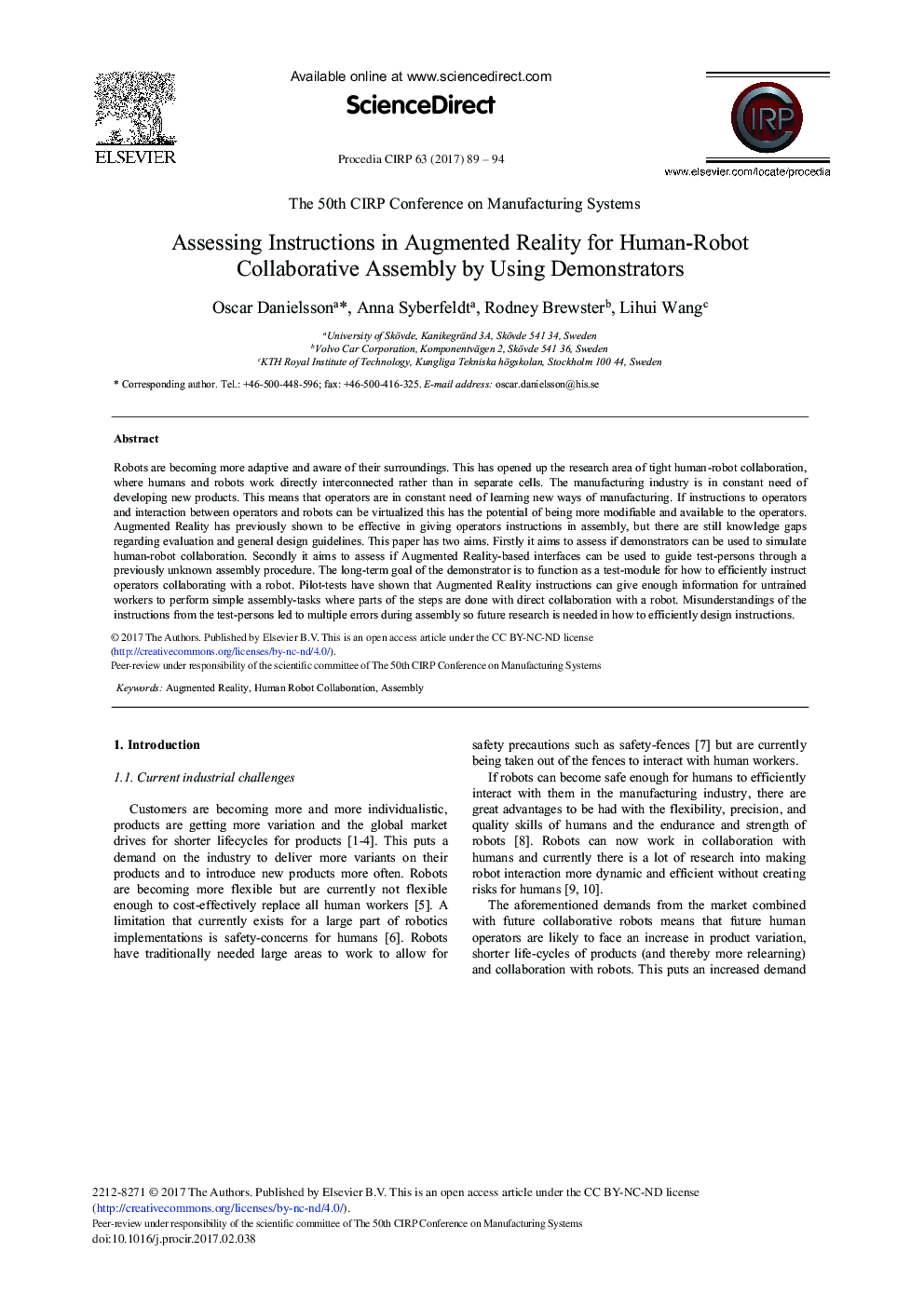| Article ID | Journal | Published Year | Pages | File Type |
|---|---|---|---|---|
| 5470129 | Procedia CIRP | 2017 | 6 Pages |
Abstract
Robots are becoming more adaptive and aware of their surroundings. This has opened up the research area of tight human-robot collaboration, where humans and robots work directly interconnected rather than in separate cells. The manufacturing industry is in constant need of developing new products. This means that operators are in constant need of learning new ways of manufacturing. If instructions to operators and interaction between operators and robots can be virtualized this has the potential of being more modifiable and available to the operators. Augmented Reality has previously shown to be effective in giving operators instructions in assembly, but there are still knowledge gaps regarding evaluation and general design guidelines. This paper has two aims. Firstly it aims to assess if demonstrators can be used to simulate human-robot collaboration. Secondly it aims to assess if Augmented Reality-based interfaces can be used to guide test-persons through a previously unknown assembly procedure. The long-term goal of the demonstrator is to function as a test-module for how to efficiently instruct operators collaborating with a robot. Pilot-tests have shown that Augmented Reality instructions can give enough information for untrained workers to perform simple assembly-tasks where parts of the steps are done with direct collaboration with a robot. Misunderstandings of the instructions from the test-persons led to multiple errors during assembly so future research is needed in how to efficiently design instructions.
Related Topics
Physical Sciences and Engineering
Engineering
Industrial and Manufacturing Engineering
Authors
Oscar Danielsson, Anna Syberfeldt, Rodney Brewster, Lihui Wang,
